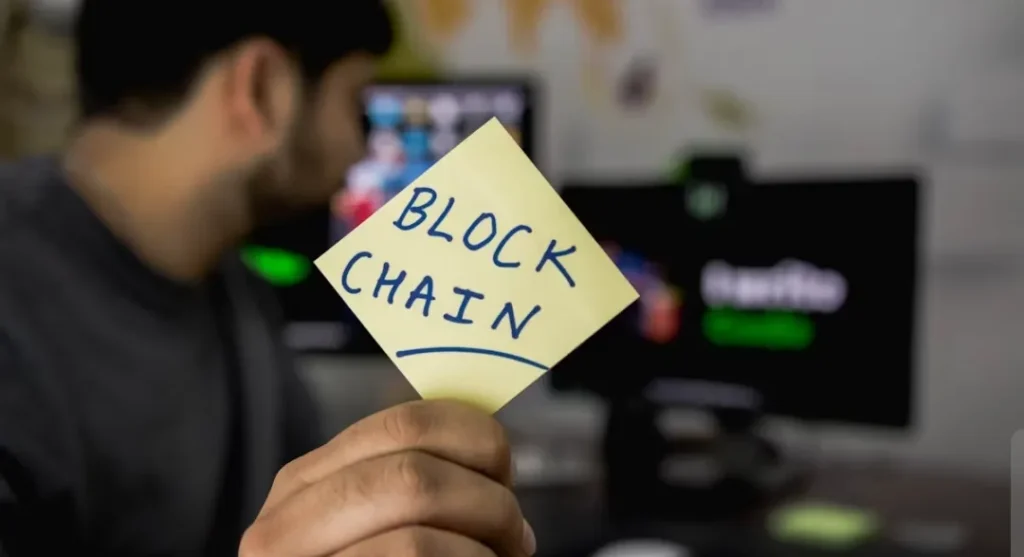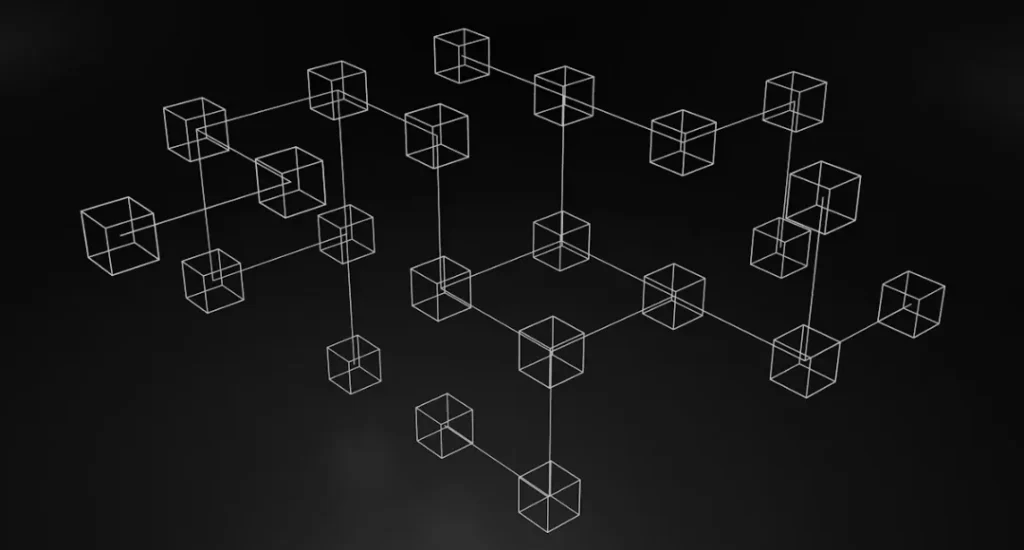Table of Contents

In recent years, “blockchain” has emerged as one of the most significant technological advancements, inspiring a revolution in various industries. Initially developed as the underlying technology for Bitcoin, blockchain has found applications far beyond cryptocurrency, including sectors such as finance, healthcare, supply chain management, and even voting systems. As we delve deeper into the intricacies of blockchain technology, it becomes essential to understand its components, operations, and potential impact on the future.
Understanding Blockchain
At its core, a blockchain is a decentralized and distributed digital ledger that records transactions across a network of computers. Unlike traditional ledgers maintained by a central authority, blockchain operates in a peer-to-peer manner, where each participant in the network has access to the entire database. This structure enhances transparency, security, and trust among users.
Key Characteristics of Blockchain
- Decentralization: Traditional databases are often centralized, meaning a single entity has control over the entire data repository. In contrast, blockchain’s decentralized nature distributes data across multiple nodes or computers, eliminating the risks associated with a central point of failure.
- Transparency: Every transaction on a blockchain is publicly recorded and can be viewed by all participants in the network. This transparency fosters accountability and trust, as any participant can verify the authenticity of transactions.
- Immutability: Once a transaction is recorded on a blockchain, it cannot be altered or deleted. This immutable nature results from cryptographic hashing, creating a permanent record that enhances the integrity of the data.
- Security: Blockchain employs advanced cryptographic techniques to secure data. Transactions are linked to previous ones through cryptographic hashes, making it virtually impossible for unauthorized users to manipulate records without consensus from the network.
- Consensus Mechanisms: Blockchain relies on consensus algorithms to validate and confirm transactions. Different blockchains employ different mechanisms, such as Proof of Work (PoW) or Proof of Stake (PoS), to achieve agreement among network participants.
How Blockchain Works
To understand how blockchain operates, it is essential to break down the process into key components and stages.
1. Transactions Initiated
The blockchain process begins when a participant initiates a transaction. This could involve transferring cryptocurrency, updating records, or entering new data into the ledger. The transaction is represented as a block, which contains essential information, including:
- The details of the transaction (amount, sender, and receiver).
- A timestamp indicating when the transaction occurred.
- A unique cryptographic hash generated from the transaction data.
2. Broadcast to the Network
Once the transaction is initiated, it is broadcasted to all nodes within the blockchain network. Each node is a computer that participates in the network and has a complete copy of the blockchain. The nodes then work together to validate the transaction.
3. Validation through Consensus
To ensure that the transaction is legitimate and meets the network’s criteria, nodes participate in a consensus process. Depending on the blockchain, various consensus mechanisms may be employed:
- Proof of Work (PoW): Used by Bitcoin and other cryptocurrencies, PoW requires nodes (called miners) to solve complex mathematical problems to validate transactions. The first miner to solve the problem gets the right to add the new block to the blockchain and is rewarded with cryptocurrency.
- Proof of Stake (PoS): Rather than relying on computational power, PoS assigns the right to validate transactions based on the number of coins a participant holds. The more coins owned, the higher the chances of being selected to validate transactions.
- Delegated Proof of Stake (DPoS): In DPoS, stakeholders elect a small group of validators who are responsible for confirming transactions. This method enhances efficiency and speeds up the consensus process.
4. Adding to the Blockchain
Once the transaction is validated, the new block is added to the existing chain of blocks in a linear and chronological order. Each block contains a cryptographic hash of the previous block, linking them together and forming a secure chain.
5. Confirmation and Finality
After the block is added to the blockchain, the transaction is considered confirmed. However, additional blocks may be added to the chain, further securing the transaction’s position and preventing54 any alterations. The more blocks added after a particular transaction, the harder it becomes to reverse or manipulate it, ensuring finality.
Applications of Blockchain
With its unique characteristics, blockchain technology has found applications in various fields, transforming traditional processes into more efficient and secure systems.
1. Cryptocurrencies
The most well-known application of blockchain is in cryptocurrencies like Bitcoin and Ethereum. Blockchain allows for secure and transparent peer-to-peer transactions without the need for intermediaries, such as banks, leading to lower transaction fees and faster transfers.
2. Supply Chain Management
Blockchain has the potential to revolutionize supply chain management by providing an immutable ledger that tracks products from their origin to the end consumer. Companies can gain real-time visibility, reduce fraud, and enhance accountabilityand traceability. By recording every transaction associated with a product on the blockchain, businesses can ensure the authenticity and quality of their goods, which is particularly crucial in industries such as food, pharmaceuticals, and luxury items.
3. Healthcare
In the healthcare sector, blockchain technology can improve patient data management by providing a secure and interoperable system for sharing sensitive medical records. With patients’ consent, healthcare providers can access and update medical histories in real time, enhancing collaborative care and reducing errors. Additionally, blockchain can aid in drug traceability, combating counterfeit medications and ensuring the integrity of pharmaceutical supply chains.
4. Financial Services
Banks and financial institutions are increasingly adopting blockchain technology to enhance the efficiency of payment processing, cross-border transactions, and record-keeping. Blockchain can significantly reduce transaction times and costs by eliminating intermediaries. Moreover, it can improve the auditing process by providing a transparent and tamper-proof record of transactions.
5. Voting Systems
Blockchain can transform electoral processes by ensuring secure, transparent, and verifiable voting systems. By recording votes on a blockchain, stakeholders can eliminate concerns about election fraud and manipulation, providing confidence in the electoral process. Voters could also receive a digital receipt, allowing them to verify that their votes were cast and counted accurately.
6. Identity Management
Identity verification is a growing concern in the digital age, with increasing identity theft and fraud incidents. Blockchain offers a decentralized solution for managing identities, allowing individuals to control their personal information securely. By using blockchain for identity systems, users can share their data selectively, reducing the risks associated with traditional centralized databases.
Advantages of Blockchain Technology
The adoption of blockchain technology presents several compelling advantages:
- Increased Security: The cryptographic nature of blockchain provides a robust level of security that is more effective than traditional systems. Transactions are securely recorded and access is restricted through consensus mechanisms.
Statistical Table on the Effectiveness of Blockchain in Enhancing Security
| Point | Description | Statistics |
|---|---|---|
| Transparency | All transactions are permanently recorded and verifiable. | 90% of companies using blockchain reported an increase in transparency. |
| Security | Data is encrypted, making forgery nearly impossible. | 70% of organizations using blockchain observed a reduction in security incidents. |
| Decentralization | No central authority controls the data. | 80% of blockchain users feel their privacy is better protected. |
| Traceability | Facilitates tracking the sources of products and transactions. | 60% of companies in supply chain management use blockchain for product tracking. |
| Cost | Reduces costs associated with transaction verification. | 30% of companies experienced a decrease in transaction costs after implementing blockchain. |
| Challenges | Need for suitable infrastructure and initial costs. | 40% of companies face difficulties in implementing blockchain technology. |
- Cost Reduction: By bypassing intermediaries and reducing transaction fees, blockchain can lead to significant cost savings for businesses and individuals alike.
- Enhanced Transparency: With a shared and transparent ledger, all participants can view the same data, which builds trust among parties and reduces the potential for disputes.
- Improved Traceability: Industries reliant on supply chains can leverage blockchain for track-and-trace capabilities, ensuring that products can be traced back to their source, which is vital for recalls and quality control.
- Faster Transactions: Blockchain can facilitate faster processing times, especially for cross-border transactions, which traditionally take longer due to intermediary delays.
Challenges and Limitations
Despite its numerous advantages, blockchain also faces certain challenges and limitations that must be addressed for widespread adoption.
- Scalability: As more users join the network and the volume of transactions increases, scalability becomes a critical issue. Many blockchain networks, especially those utilizing PoW, encounter limitations in processing speed and transaction throughput.
- Energy Consumption: Proof of Work consensus mechanisms require significant computational power, leading to high energy consumption and environmental concerns. Alternatives like Proof of Stake are being explored to mitigate this challenge.
- Regulatory Uncertainty: The regulatory landscape for blockchain and cryptocurrencies remains ambiguous in many regions. Governments worldwide are still grappling with how to classify and regulate blockchain technology, which can hinder innovation and adoption.
- Integration with Legacy Systems: Businesses looking to adopt blockchain technology may struggle to integrate it with existing legacy systems, necessitating time and investment to transition smoothly.
- User Education: As a relatively new technology, blockchain can be complex and difficult to understand. Therefore, there is a need for user education to build confidence and encourage adoption among non-technical stakeholders.

Future of Blockchain Technology
The future of blockchain technology appears promising, with ongoing developments and innovations poised to address current challenges. As companies invest in research and development, we can expect advancements in scalability, security, and interoperability. Furthermore, the combination of blockchain with other emerging technologies, such as artificial intelligence (AI) and the Internet of Things (IoT), is likely to open new avenues for applications.
Decentralized Finance (DeFi) is one of the most exciting areas experiencing rapid growth. DeFi platforms leverage blockchain technology to offer financial services without intermediaries, providing users with greater control over their assets and reducing traditional banking fees.
Non-Fungible Tokens (NFTs) are another area gaining traction. NFTs utilize blockchain to verify the authenticity and ownership of digital assets, enabling new opportunities in art, gaming, and entertainment.
Blockchain technology is a transformative force with the potential to reshape industries and elevate trust, security, and transparency to unprecedented levels. Understanding its fundamentals and operations is crucial for businesses and individuals alike as they navigate this evolving landscape. While challenges remain, the growing interest and active development in blockchain indicate a future where this technology plays an integral role in solving some of the world’s most pressing issues.
You Might Like: who discovered the speed of light ?
